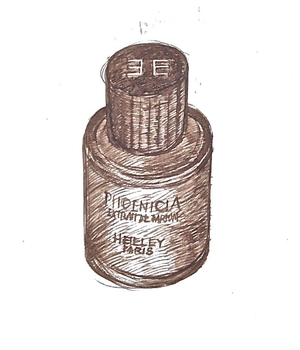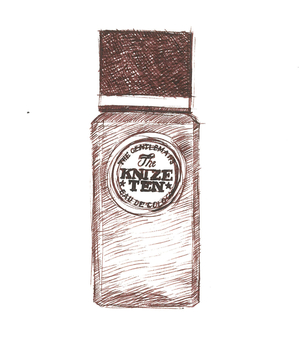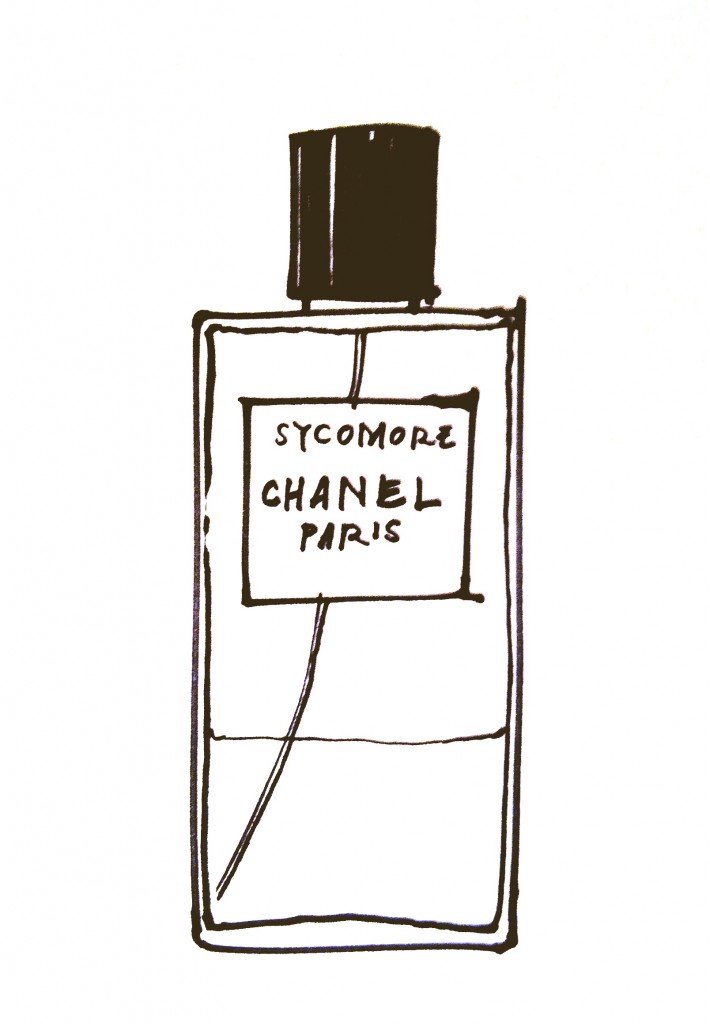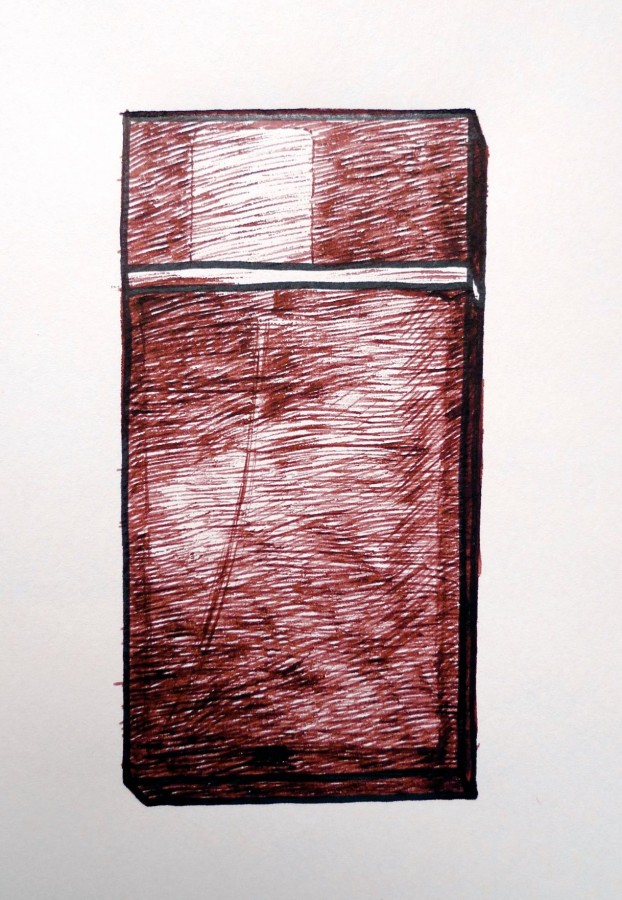Tagged With ‘smoky’
Heeley
Phoenicia
24 August, 2015
 Though there’s some dispute about its exact origins, the word ‘perfume’ most likely derives from ‘fumes from a substance being burned’, so you could say that Phoenicia, the latest fragrance from Yorkshire-born, Brussels-based perfumer James Heeley goes back to perfume’s roots.
Though there’s some dispute about its exact origins, the word ‘perfume’ most likely derives from ‘fumes from a substance being burned’, so you could say that Phoenicia, the latest fragrance from Yorkshire-born, Brussels-based perfumer James Heeley goes back to perfume’s roots.
The name refers to the ancient civilisation that flourished in the eastern Mediterranean around 1000BC, but Phoenicia’s smell is instantly evocative of childhood bonfires, just as his earlier L’Amandière evokes an almond orchard in spring.
‘I loved the way my hair smelled after a bonfire,’ Heeley recalls, and he’s captured the memory using a mixture of cedarwood, oud, smoky birchwood and vetiver.
Luckily there’s more to Phoenicia than smoke. ‘I’ve always loved the concrete of labdanum ciste,’ Heeley says (the densest refined extract from the fragrant Mediterranean shrub Cistus ladanifer), ‘which has a slight smell of dates or prunes.’ Adding this to the formula gives Phoenicia an attractive hint of dried-fruit sweetness, which balances the smokiness is a very attractive way. It certainly lights my fire.
Knize
Knize Ten
8 May, 2015

The year 1924 was a great one for perfume, if only because it saw the launch of both Chanel’s sumptuous Cuir de Russie and this, the wonderful Knize Ten. That both have survived into the present day is a bit of a miracle, but though they’re both usually placed in the ‘leather’ category of fragrances, they could hardly be less similar.
Cuir de Russie is a wonderfully rich and complex perfume, but its oddly androgynous combination of smoke and leather with a heavy floral note can make it rather difficult to wear. Knize Ten is a much more immediately appealing, fresher-smelling scent, and its leatheriness is tempered with the kind of zesty and herbal ingredients you’d expect to find in a classic eau-de-cologne – things like bergamot, lemon and geranium.
These gradually fade away on the skin, leaving a lovely, long-lasting but not overpowering leathery scent, less smoky than it is sweet. To me it also has a strong whiff of heliotrope – those electric-blue park bedding plants whose cherry-pie scent can be so intoxicating on a hot still high-summer’s day – but others may detect more than a hint (if I remember it right) of Plasticine; not unpleasant in itself, but enough to add a touch of childhood to the mix.
If Cuir de Russie is a testament to the genius of Ernest Beaux (whose greatest triumph was Chanel No 5), then Knize Ten is a fitting monument to François Coty (the mass-market perfume pioneer) and his brilliant technical director, Vincent Roubert (who had previously worked with Ernest Beaux in Grasse, then the perfume capital of France). It was commissioned, rather unusually, by a bespoke men’s tailoring company from Vienna, Knize, whose boutique is still going strong today. I’d wondered whether Knize Ten was the sole survivor of nine other fragrances, but it turns out that the name was dreamed up by their advertising director of the time, who beat Ralph Lauren by at least 50 years by seeking to associate the company with the aristocratic imagery of polo: the name ‘Ten’ was chosen to reflect the highest handicap in the game.
I love everything about Knize Ten: not just its instantly appealing smell but the smart glass bottle, with its crisply bevelled corners and chunky black cube of a cap. I’ve read somewhere that, like the company’s Viennese store, it was designed by the legendary Austrian architect Adolf Loos, and although that seems like wishful thinking it could be true; Loos designed further shops for Knize in Paris and Berlin, so their association was obviously close, and the dates look perfectly plausible too.
Even the typography of the label – a bold slab serif in a Victorian playbill style – is punchy and confident, just like the perfume inside. And while it’s far less widely available than it deserves to be, it’s not even that expensive by contemporary standards: what’s not to like?
Chanel
Sycomore
28 May, 2014
 Until recently, Sycomore was one of the most extraordinary perfumes that I know (see note, below). OK, its name looks like a misspelling of sycamore, a tree that – in Britain at least – no right-minded person would name a fragrance after. Sycamores, after all, are as common as muck, breed like rabbits and are often looked down on by ecologists as they’re not even native trees.
Until recently, Sycomore was one of the most extraordinary perfumes that I know (see note, below). OK, its name looks like a misspelling of sycamore, a tree that – in Britain at least – no right-minded person would name a fragrance after. Sycamores, after all, are as common as muck, breed like rabbits and are often looked down on by ecologists as they’re not even native trees.
Acer pseudoplatanus, to give the tree its proper botanical name, is also responsible for many of those deeply irritating ‘leaves on the line’ excuses that railway companies give out each autumn to explain why their trains are running late. Worst of all, from a perfume perspective, they don’t even really smell of much, though their leaves do have the faintest leathery scent and their wood, once dried enough, burns with a pretty generic woodsmoke smell.
So is Sycomore just an example of misguided marketing, like Ralph Lauren’s dreadfully named Glamourous? Actually, no. Coming from arguably the world’s most tightly policed brand, its name will have been very carefully considered – and actually it almost certainly refers not, as I’d initially thought, to Acer pseudoplatanus at all but to a rather more exotic tree, the so-called Sycomore fig.
Ficus sycomorus (to use its Latin name) is a large, spreading tree that grows across central Africa and the Middle East, where its heavy shade is much appreciated; it was known to the Egyptians as the Tree of Life. It’s a tree I haven’t sniffed, but my guess is that it shares at least some of the dry, green, slightly fruity scent that we know from other varieties of fig – though ironically there’s only the faintest hint of figginess in Sycomore.
Anyhow, enough about the name. What makes Sycomore extraordinary, for me, is a trick it seems to be able to do that no other perfume I’ve come across seems to be able to do. This is to smell like two completely different scents, depending on whether you smell it close up or at a distance. Up close it has the strong, earthy, pleasantly bitter scent of vetiver, the root of an Indian grass that’s related to lemongrass and citronella. It’s also grown commercially in the Caribbean, and apparently Chanel’s super-high-quality vetiver originated in Haiti.
Vetiver is usually classed as one of the great masculine fragrances, presumably because of its bracing bitterness and lack of cloying sweetness; it’s certainly not a flowery smell. But it also has a warmth and – get this – a touch of smokiness that gives it extra depth and complexity, especially when it’s surrounded by such a delicious cushion of other scents, which mix smokiness with a slightly sweeter touch of fruit. Vetiver is also famous for its staying power, and a spritz of Sycomore can last you all day.
It’s the added fruitiness that, on occasion, one gets a whiff of when someone wearing Sycomore strolls by, and then it’s like a different, warmer, sweeter fragrance altogether, with hardly a hint of the vetiver that dominates the perfume on the skin. If it’s an intentional trick I’m in awe, though it seems perfectly possible, given that Sycomore was created by Chanel’s chief nose Jacques Polge in collaboration with Christopher Sheldrake, the legendary British perfumer who has been Chanel’s director of research and development since 2005.
Like the other fragrances that belong to Les Exclusifs de Chanel, Sycomore costs about twice as much as your average perfume, but it does come in a typically (for Chanel) handsome bottle, beautifully presented in a chunky white-and-black box. The hidden magnet in the heavy black cap, ensuring that the iconic twin Cs of the Chanel logo always end up perfectly aligned, is a particularly nice touch, even if it has since been adopted by one or two other brands.
Though it’s a classically masculine scent Sycomore is (quite rightly) marketed as a unisex fragrance, and like most men’s perfumes it can smell wonderful on a woman. Yet what I love most is that, from the very first sniff, it has a wonderful feeling of luxury, quality and depth, which are things that are all too often lacking in other perfumes. And who could resist its baffling cleverness, like a cryptic crossword in scent?
Autumn 2016 update. Oh dear: evidently Sycomore hasn’t been a commercial success, as Chanel have recently ‘updated’ it, and now – minus the fruitiness that made it so unusual – it’s a perfectly pleasant, fairly straight-up vetiver. From being unique it’s become one of many. Such a shame – another great perfume gone.
Yves Saint Laurent
M7
12 July, 2012
 Tom Ford’s relatively short tenure at Yves Saint Laurent, from 2000 to 2004, won him both fans and detractors – among them YSL himself, who used to pen helpful letters criticising Ford’s latest shows. But it was Ford’s own considerable design talents and his genius for publicity dragged the declining fashion house back into the limelight, no more so than with the launch of M7 in 2002.
Tom Ford’s relatively short tenure at Yves Saint Laurent, from 2000 to 2004, won him both fans and detractors – among them YSL himself, who used to pen helpful letters criticising Ford’s latest shows. But it was Ford’s own considerable design talents and his genius for publicity dragged the declining fashion house back into the limelight, no more so than with the launch of M7 in 2002.
In a nod to Jeanloup Sieff’s legendary 1971 photograph of a naked Yves Saint Laurent that was used to promote the first YSL men’s fragrance, Ford launched M7 in 2002 with a full-frontal nude of martial-arts star Samuel de Cubber shot by Swedish photographer Sølve Sundsbø.
The all-too predictable storm of controversy may have long since been left behind, and sadly the perfume has since been reformulated and dumbed down, which is a real shame as it was originally an unusual and (to me at least) extremely appealing scent.
Tom Ford’s influence is most obviously apparent with the original bottle (pictured), which was a crisply designed rectangle of brown glass, the colour of medicine bottles. The brown perspex cap clipped on with a satisfying clunk, and the spray mechanism was set two-thirds along the top, giving it a cool asymmetric outline which has ‘designer’ written all over it. (Not literally – keep up!) It’s since been redesigned and the perfume reformulated, which is sadly typical of the industry.
What makes the perfume itself immediately striking is its odd yet somehow very successful combination of fruity sweetness with the almost catch-in-the-throat smell of woodsmoke, which gives it a masculine edge it would otherwise lack. Not very noticeable is an initial burst of citrus provided by bergamot and mandarin, though that probably adds something to that first impression of fruitiness.
What I hadn’t realised was that perfumers Alberto Morillas and Jacques Cavallier also added a touch of rosemary to the mix. It’s not something that jumps out at you, but smelling it again I twigged, for the first time, that rosemary’s herby smell has something a bit smoky about it too.
It’s a very clever way to emphasise this fragrance’s appealing smokiness, whose dryness is also underlined by a touch of that ultimate in male-perfume ingredients, the bitter earthy smell of vetiver. M7 lasts well too, and if some people find it either too fruity or slightly medicinal, then let them; I really don’t care.